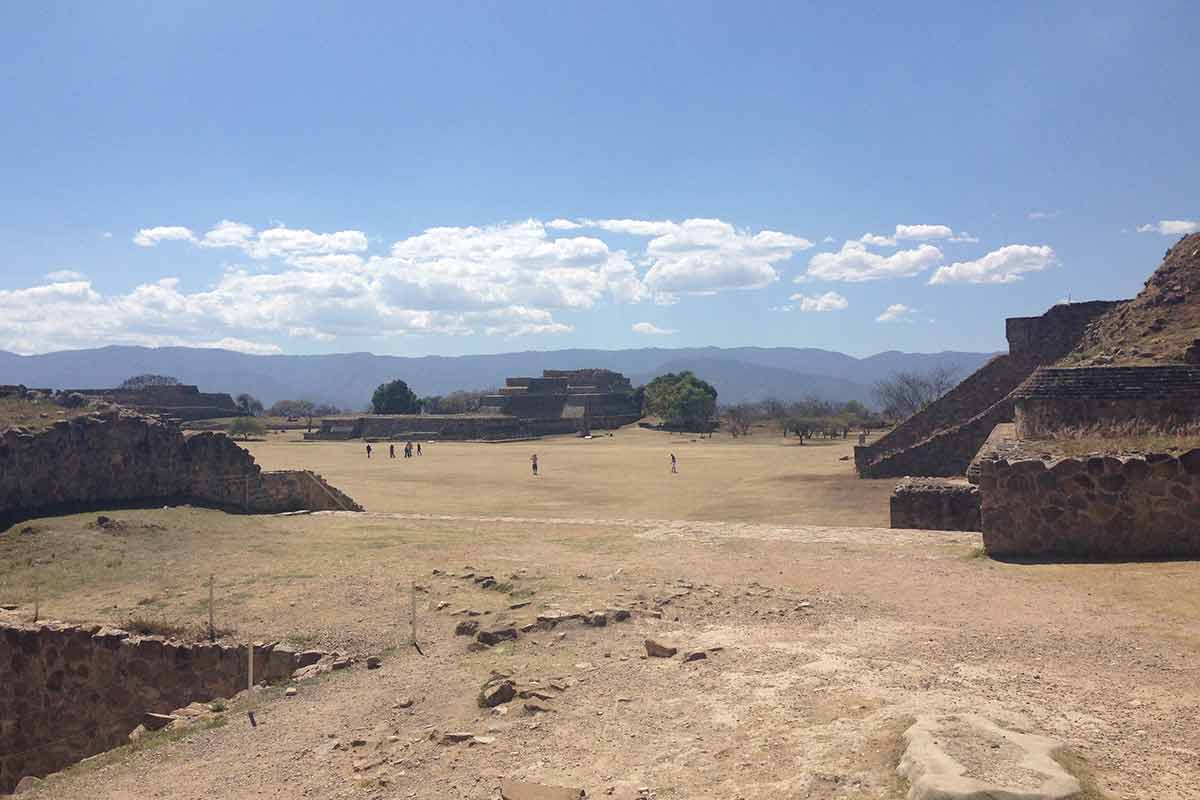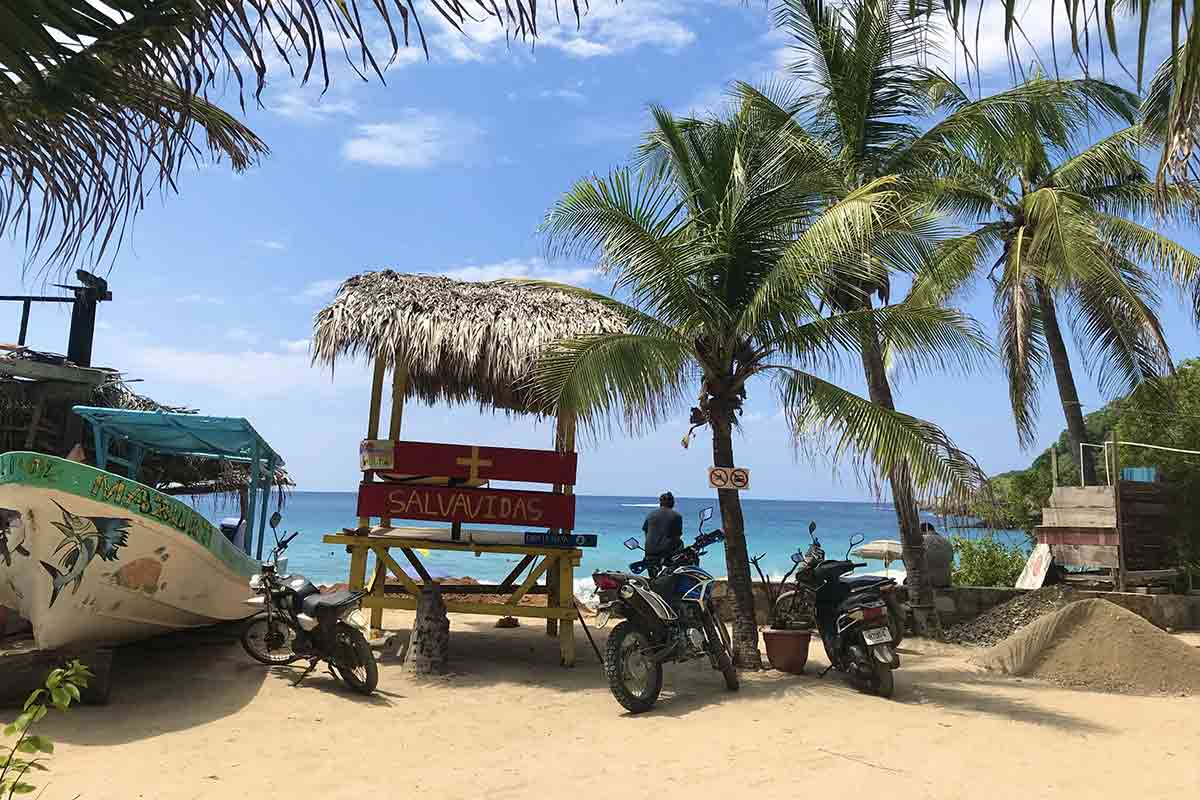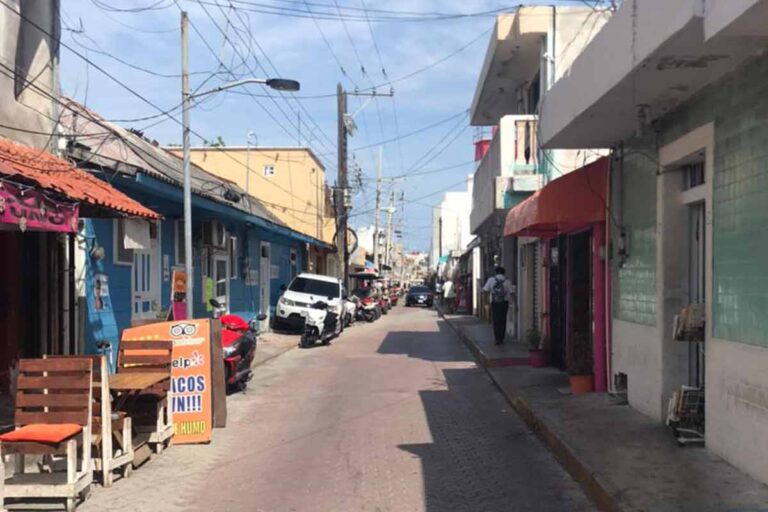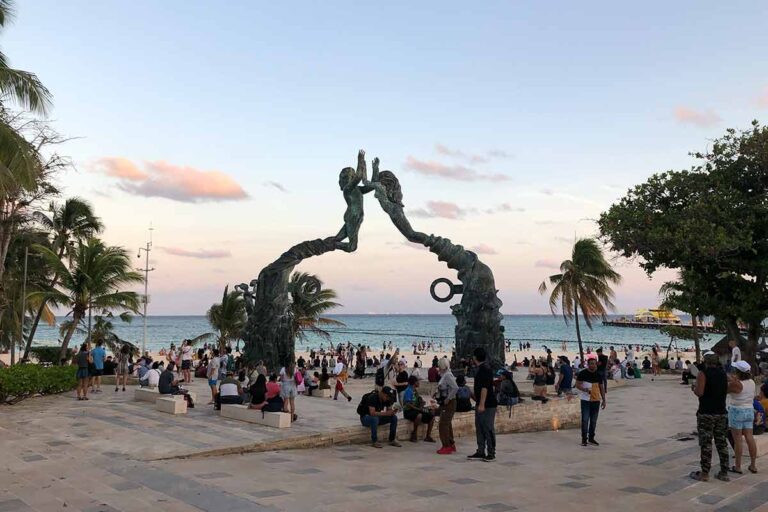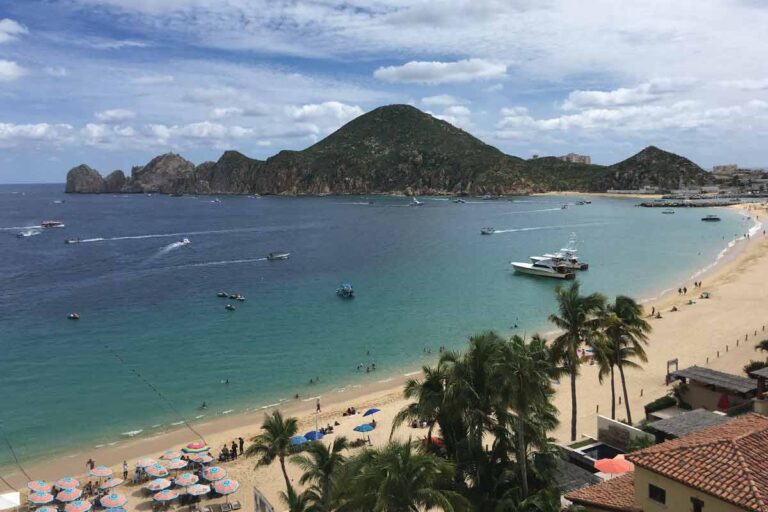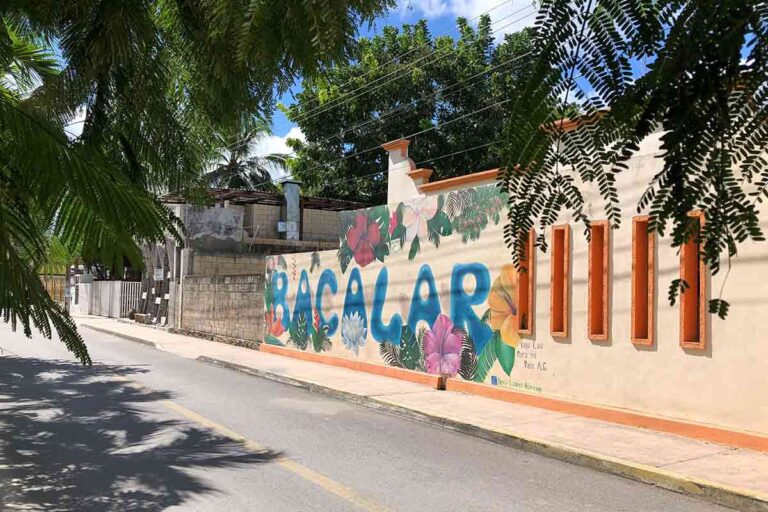Best time to visit Mexico
In this guide, we will explore the best time to visit the different regions in Mexico.
We will look at the weather by region and look at things such as hurricane season, wintertime, summertime and average temperatures to give you a better idea of when to visit each region.
Mexico is a gigantic country! One thing every backpacker must know is that the weather varies by region and by season.
Depending on what your Mexico itinerary entails it’s worth checking local forecasts for your chosen region to ensure you’re visiting at the right time.
Best Time to Visit Mexico
As backpackers, we must be aware of weather conditions not only for safety reasons but to ensure we are maximising the most of our time.
When you plan to go backpacking Mexico you must know where and when to go, not only for climatic reasons, but also for cultural and budget reasons.
Let’s start by looking at one of the most popular regions in Mexico:
Best Time to Visit Baja California
Like most of the coastal regions in Mexico, there is a clear season for hurricane weather which you may want to avoid.
This runs from July to October and is joined by some pretty scorching temperatures (highs of 95°Fand lows of 81°F).
The precipitation levels are much higher during this season, and you can expect the odd heavy shower every now and then (although usually fleeting).
Visiting places such as Cabo San Lucas during the winter months is great, as the temperatures are still warm but without the unpredictable weather.
Rainfall is a lot lower, however, there will be a lot more tourists visiting this time of year, which will mean more expensive accommodation.
Overall, if you’re looking for a great time, we suggest visiting around the months of October and November, and also from March through to May.
Best Time to Visit Chihuahua
With the majority of the region being shrouded in mountains and high altitudes, the weather can range to both extremes.
Visiting around the wintertime is popular due to end of year breaks, however, the temperatures in The Copper Canyon often drop below 32°F, so make sure to cover up!
During these months, Chihuahua City is quite pleasant to visit, with averages highs of 73°F and lows of 37°F.
The summer months can be quite scorching, which is great if you like a good roasting. July and August are the hottest times to visit the Copper Canyon, with highs sometimes reaching 93°F.
The lows can still drop down to 60°F, so make sure to bring an extra layer with you if heading deep into the valley. Chihuahua City during the summer can get uncomfortably hot, with highs of 97°F and lows of 66°F.
Rainfall is more frequent for both around the summer months, and there’s even a chance of snow in the winter in certain destinations in the Copper Canyon.
Whilst this can be a nuisance, it can transform parts of the Copper Canyon into a lusher green paradise. Those who want to explore the Copper Canyon will want to go on this all-action tour. Not only will you see the very best scenery, but you’ll also get to meet the mysterious Tarahumara tribe who live in these remote parts.
Overall, if visiting both destinations, the best months would be August and September, where there is less rain, and more consistent, warm temperatures that aren’t overbearing.
Best Time to Visit Durango
Despite being in the desert, you may be surprised to learn that it’s not a sweltering hot box every day of the year.
In fact, average temperatures from March until October only range from 59.2°F up to 72°F. The winter months are cooler, circling between 52°F and 57°F on average, with lows creeping down to a chilly 38°F.
Rainfall is usually not a problem most of the year, although there is a lot more falling from the months of June until September, which is between 100-130mm each month.
The average temperature heading into the night is cooler, but not the extreme colds that you would expect in the desert. I’d still recommend bringing a jumper or extra layer anyway.
Overall, heading to Durango in pretty much any month is good, although if you don’t like rain or cold temperatures, then your best bet is the shoulder seasons of Spring and Late Autumn.
Best Time to Visit Sinaloa
The hurricane season runs here from June until September, which is accompanied by lots of quick, infrequent heavy showers.
This can make some roads inaccessible in the region. However, if you are a fan of roasting in high temperatures, then you would like this time of year as highs can reach up to 91°F.
The winter months are also popular, with more consistent weather, and average highs of 80°F and lows of 60°F. The only downside here is that accommodation and flights will be more expensive, as the city prepares to receive a high volume of tourists who are off for some winter sun.
For nature lovers, you will want to head to Mazatlán between December and April, where you will have an increased chance of spotting the following:
- Fin Whales
- Humpback Whales
- Orcas
- Pacific Bottlenose Dolphins
- Pan-Tropical Spotted Dolphins
We recommend joining this Whale Watching tour, which includes all transport as well as drinks and snacks.
Overall, the best months to visit include November, February, and March, where the weather is still warm, yet showers are unlikely to ruin any plans. With the latter months, it’s also a great time to spot some pretty incredible marine life!
Best Time to Visit Nayarit
The summer months of July, August and September are by far the hottest, with some sultry highs of 92°Fand comfortable lows of 75°F. The rest of the year is still very warm, with December to March having the coolest highs of 82.5°Fand lows of 63°F.
Nayarit is situated along the Pacific coast, therefore has its own hurricane season which runs from June until October. The average amount of rainfall ranges from 90-170mm during these months, although with the exception of September where it has the highest amount of around 200+mm.
Overall, we would say the best time to visit Nayarit for the beach would be from March until May, or October and November. These months promise high temperatures, with less rain and stormy weather. What more could you possibly want?!
Best Time to Visit Jalisco
Jalisco has three different regions.
The first is the Pacific coast, which includes destinations like Puerto Vallarta. Temperatures are great all year-round, with the hottest between May and August with highs of 92°F. Rainfall is also more pronounced during this time, with chance of hurricanes.
Next, we have Guadalajara and the surrounding regions. Rainfall is typically low from October until April, although it sharply increases during the summer months. The average hottest month in Guadalajara is May, with highs of 90°F and lows of 59°F.
Lastly, we have the seldom visited Los Altos region, which is a lot more mountainous than the rest. You can expect a lot cooler temperatures up here, so be sure to bring extra layers with you. The precipitation pattern follows similarly to that of the coast, so if you want to stay dry and warmer then avoid the summer months.
Overall, putting all regions in consideration, the best time to visit Jalisco would be in the Spring, where temperatures are comfortable in Guadalajara and still hot along the coast. There’s also less rain during this time of the year as well.
Best Time to Visit The State of Mexico
Mexico City’s annual weather is fairly consistent compared to the coastal regions. The days will be warm, however the temperature at night will drop fairly rapidly.
If rain is something you want to avoid, then it’s best to head during the dry season which runs from November through to April. It is also slightly cooler during this time, with averages of between 55-60°F.
The lows can be quite chilly at around 41-43°F, with highs of circa 72°F. This is the ideal time to head on the hot air balloon tour over Teotihuacán, where you’ll have some truly unforgettable views of these ancient pyramids
Heading during the rainy season will yes, have more rain! Although temperatures will slightly rise to an average of around 65°F, with highs of 77°F, and lows of 54°F.
Mexico City can provide what we call a “fake warmth” (definitely not out of the dictionary) in that the sheer amount of pollution and smog will make it feel a bit warmer. If you’re going to use the subway, try and dress lighter as it can feel like a furnace sometimes (especially during rush hour)
Overall, there’s no real best time, although the city will have more tourists around the Christmas break (however it is still overwhelming and bustling whenever you go!).
Best Time to Visit Puebla City
Whilst most of the destinations already covered have the tendency to range through the extremes, Puebla is by far one of the most consistent temperature-wise.
Temperatures are stable throughout most of the year, ranging from 63°F-68°F. Highs in the summer can reach 79°F, with lows of 55°F. It can get a little more chilly in the Winter, with highs and lows of 72°F and 43°F respectively.
Rainfall does still vary, with a much higher amount falling between June and September, with around a 70% daily chance. The rest of the year receives much less precipitation, which falls around the 10% mark daily.
Overall Puebla is great to visit year-round, although the best times to avoid the rains would be the Spring and Autumn seasons. Even during the Summer, the temperatures drop quite a bit by the evening, so take a couple of extra layers with you.
Best Time to Visit Hidalgo
Hidalgo is a very mountainous and rugged area, so the weather will be cooler than other regions, although this still varies quite considerably between different locations.
Pachuca has a consistently cool average of 49-59°F throughout the year, although the summer months tend to be warmer. The rainfall is a lot higher between June and September.
In Ixmiquilpan, the weather is a lot warmer. The summer months have an average of 68°-73°F, with highs of 79°F.The rainfall follows the same pattern as Pachuca, with lots more falling in the summer. November until March are the driest months here.
Overall, the weather here is a lot cooler so don’t expect to bronze up as if on the beaches of Cancún. The winter can get quite chilly, although this period does avoid the summer rain.
The best time to visit both would be between April and May, when you get the best chance of both warm and uninterrupted weather.
Best Time to Visit Veracruz
Veracruz is a hugely diverse state, with beaches, jungle, and very high altitudes. As a result, the weather will vary a lot both in location and at different times of the year.
In Heroica Veracruz, the temperatures are consistently warm all year round, ranging from 70°F to 85°F. Even the lowest lows rarely go below 50°F, so it’s a great pick for those looking to hit the beaches and relax in the warm sun.
The summer has a lot more rain than the rest of the year (June and September especially – with around 20 days each), so if you want consistent weather than you may want to look at the rest of the year.
Orizaba, despite its higher altitudes actually has higher temperatures than the coast. The warmest month is May, with highs of 85°F and an average daily temperature of 70°F.
Those who want to climb this beast will want to head on this unforgettable, overnight trek. You’ll have all meals and equipment provided for you, as well as a qualified guide to lead you every step of the way.
Even in the winter months, the average doesn’t really drop below 59°F, making it a great destination to visit year-round. Of course, you can expect to freeze if ascending the volcano, where temperatures frequently drop below 32°F!
Now we’ll cover the northern region, well around Tajin specifically. The hottest temperatures are between April and September, with averages of 77-80°F.
The lows during this time are around70°F. The rainy season starts from June through to November, although September and October are the wettest months by far. Overall, visiting here (like most regions along the coast) is best in either Spring or Autumn.
Best Time to Visit Oaxaca
Oaxaca is quite an expansive state, from the highlands to the Pacific coast. Therefore, the weather here can range quite a bit.
In places along the coast like Puerto Escondido and Huatulco, the weather follows the same distinct pattern of dry and wet seasons.
Regardless of the season, temperatures are very consistent and hot throughout the year, with highs of 97°F and lows of 72°F. The rain, however, varies pretty extremely.
Between June and September (wet season) you can expect around 15 days each month of sharp and heavy rain, with anywhere from 150mm to 180mm.
The dry season is a much better time to visit, with similar hot temperatures and very minimal rain falling in these months.
The weather in Oaxaca City is cooler. It’s also pretty consistent throughout the year, with average temperatures of between 66 and 72°F.
The coldest months are December and January, with lows of around 9°F.Again, rain is an issue in the summer months, with between 50-70% chance each day here. Overall, Spring and Autumn would be the best months to visit for warm and consistent weather.
Best Time to Visit Chiapas
First up we have San Cristóbal. The warmest times to visit are between April and July, with highs of 81°F and lows of 55°F.
December and January are the coldest months, with lows dropping down to 39°F occasionally.
Note as well – the weather here can drop rapidly in the evening, so even if it’s warm during the day, still take a few layers so you don’t get caught out. The driest months to visit are between November and April.
Palenque is a lot hotter in comparison. The average temperature remains constant throughout the year, between 75-79°F. Highs can reach up to a toasting 90°F.
Palenque also has a seasonal pattern, which affects the amount of rain. The rainiest months are between June and September, which can have up to 80% chance rain per day! March and April are the driest months of the year to visit.
Overall, if you are planning on backpacking Chiapas, then the best time to visit is either April-May or October-November. You’ll get warm temperatures, less rain and also less unpredictable weather.
Best Time to Visit Yucatán
Yucatán is great to visit all year round, although weather (mostly storms and rains) can be more unpredictable during the summer months.
The hurricane season here runs from June until October, where rainfall is a lot more frequent and heavier, at around 150 – 200mm per month on average.
The average temperatures hover around 81°F throughout this period, with highs sometimes reaching up to a toasty 95°F.
The dry season has a lot less rain, ranging from 30-50mm on average through the months of November until May. This is the best time to visit the various cenotes in the area. We recommend heading on this day trip where you’ll spend time swimming in one of these deep blue caverns, as well as exploring the ruins of Chichén Itzá
March is generally the driest month for a visit. Average temperatures are a bit cooler, although still pleasantly warm at between 71-77°F. The hottest month in the dry season is May, with highs of up to 93°F.
Best Time to Visit Quintana Roo
Located along the Caribbean coast, this region in no stranger to hot temperatures. However, it has distinct dry and summer seasons, which are somewhat consistent wherever you are in this state.
The dry season starts in late November and ends in May. This season (as you can probably guess) has very little rain, averaging between 1-3 rainy days for each month. The average day temperatures range from 76-81°F in this period, with highs of up to 87°F.
The wet season runs from June until October, where there is a higher risk of hurricanes and frequent storms. The temperatures are slightly higher, with highs of up to 90°F and lows of 75°F. There’s an average of 15-18 days of rain for these months.
Overall, the best time to visit depends on what you want most. The temperature remains hot all year round so shouldn’t be an issue.
If you don’t like rain, or would be bothered by quick and hard showers, then head between November and May.
The main touristy seasons are Christmas, New Years and Spring break, which are all amazing for events however tends to be more expensive too!
Best Time to Visit Mexico
We have come to an end of our guide on the best time to visit Mexico.
This popular country hold endless possibilities for the curious traveler no matter what style of travel is intended.
The weather varies throughout the year, and in certain regions (as seen above) the summer season can bring a high risk of hurricanes and torrential rains.
With all this in mind, and with a better idea of what to expect, take a look at some of the best things to do in Mexico that you can add to your trip itinerary.
👉🏽 P.S. If you’ve found this guide helpful, buy us a coffee here to say thanks! Or, support us by downloading our South America Travel Bible to get our best content.
“Dear traveler! Some links in this post contain affiliate links. Meaning, if you click through and make a purchase, book a hostel or sign up for a tour, we may earn a small commission at no additional cost to you. Your support means a lot and helps us to carry on traveling and maintaining the quality of this site for you.”

